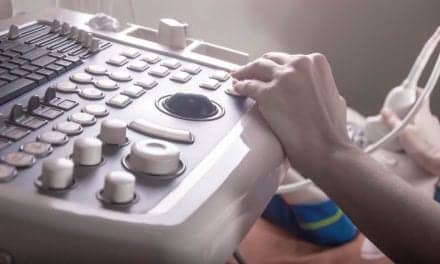Marlborough, Mass.-based Hologic announces the U.S. launch of the SuperSonic MACH 40 cart-based ultrasound system.
“The SuperSonic MACH 40 system embodies our commitment to delivering future-oriented solutions and was designed to help healthcare professionals reduce unnecessary biopsies by eliminating re-scans, reducing lesion correlation time, and improving overall diagnostic accuracy,” says Pete Valenti, Hologic’s division president, breast and skeletal health solutions.
What’s more, the SuperSonic MACH 40 system leverages UltraFast imaging technology—inspired by graphics innovations from the video-gaming industry—to provide greater frame rates of up to 20,000 images per second. The technology also enables innovative imaging modes, without the trade-offs present in conventional systems.
The new system is further enhanced by B-mode imaging technology, which helps improve diagnostic confidence thanks to smoother images with reduced speckle, clearer images across all tissue densities, and improved lesion conspicuity. It also features the third generation of shear wave-based elastography technology, ShearWave™ PLUS, which provides additional diagnostic information that may help with patient management, including diagnostic workup of breast lesions, lesion targeting during ultrasound-guided biopsy, and lesion size measurement.
“Hologic continues to expand its portfolio with the patient and clinician in mind, and that’s apparent with the recent SuperSonic Imagine acquisition and new innovations,” says Stacy Smith-Foley, MD, medical director of The Breast Center at CARTI in Little Rock, AR. “The result has been a consistently growing suite of tools that truly complement each other and help me and my colleagues to efficiently care for our patients on a day-to-day basis across the entire breast health continuum.”
Clinicians performing precision-dependent ultrasound-guided biopsies with the SuperSonic MACH 40 system can also enjoy enhanced control with Needle PL.U.S. imaging, which enables visualization of both the biopsy needle and anatomical structures in real time and predicts the needle trajectory.





